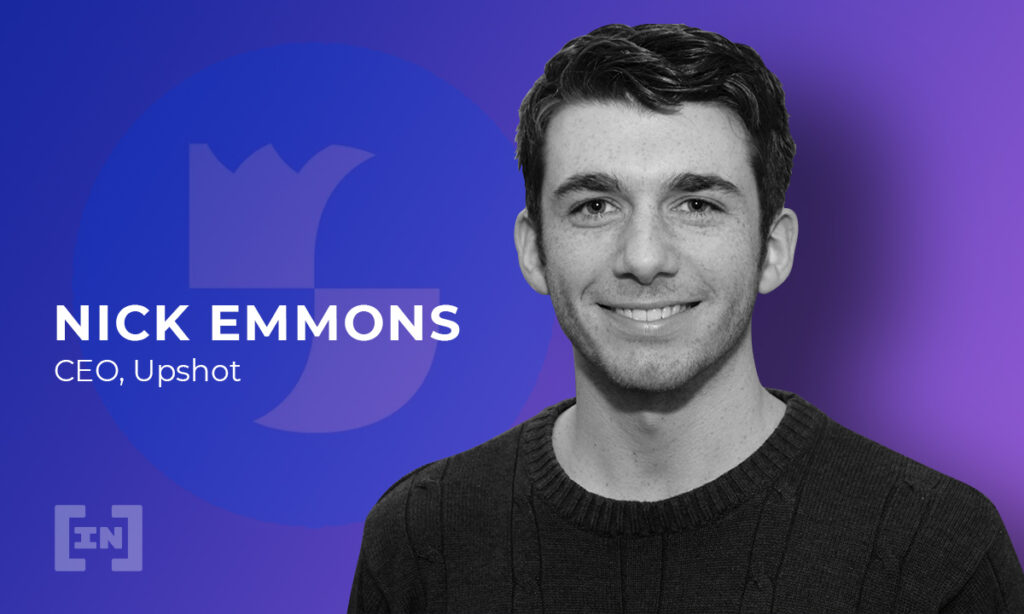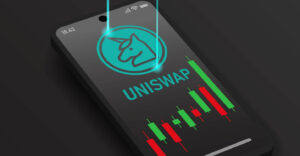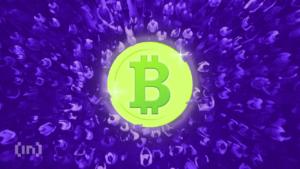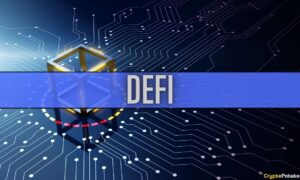Tackling the NFT Pricing Issue With Upshot CEO, Nick Emmons

BeinCrypto spoke to Nick Emmons, CEO of Upshot. He discussed the non-fungible token (NFT) pricing issue and how to bring evaluation to this growing sector.
NFTs are continuing to sell. From major names to smaller creators, the NFT market is proving its value and longevity.
However, as seen with some of the auctions, the prices for NFT artwork especially can reach absurd hypes. It’s these million-dollar sales that have contributed to some calling the current boom a bubble.
The issue of a bubble versus a viable market is significant and nuanced. However, it is fair to look at these massive sales and be concerned that the hype drives the price rather than the underlying value.
Currently, there is no way to evaluate an NFT artwork officially. Users vote with their bids and buys rather than having a specific person or group of people identify its value.
This is where Nick Emmons and Upshot want to come in. Upshot is a platform that aims to reward contributors for their honest insights and NFT appraisals.
The platform incentivizes experts to contribute their honest opinions on NFTs and content for a payout.
Decentralization and collectivization expert opinion
“I found out about this new field of game theory called peer prediction. It focuses on incentivizing decentralized people to answer subjective questions honestly. To reveal their opinions, their insights, their preferences in an honest way,” explains Emmons.
In August 2020, while finishing an abstract build of a question and answer protocol, Emmons and his team caught wind of the NFT hype that was just starting.
“The thing with NFTs is that they are these, non-fungible low-velocity assets. So they don’t change hands very often. That means the open market has a very difficult time pricing them efficiently. These transfers of ownership that act as price discovery events for more liquid fungible assets just don’t happen frequently enough with NFTs for that to be the sole pricing mechanism.”
“When you look to assets in the real world, things like real estate and physical art, you see this heavy reliance on the use of appraisals in pricing—this querying of experts’ opinions about the value of the assets. The problem with porting that over one-to-one for NFTs is that appraisals in those contexts rely heavily on identity, on firms, on reputation, on things that we don’t have abundant access to in a decentralized, autonomous setting. But what we do have access to now obviously is this general question and answer protocol that incentivizes honesty in the face of subjectivity,” he says.
As a result, the team saw NFT art as a great application, with good market timing for collectors and experts to derive value and ascribe value in the NFT space.
Peer prediction guiding the way
As mentioned by Emmons, the underlying theory for these appraisals is peer prediction. It hinges on working out honest and dishonest answers to derive value.
“Peer prediction heavily leverages information theory in identifying honesty versus dishonesty or malicious activity happening in the system. So essentially what happens is, you and I would answer a set of questions. Our answers to those questions would then be compared to each other.”
“We would glean insights from the correlation or lack of correlation in those answers. Using the questions to determine what honesty looks like, what useful disagreements look like versus superfluous disagreements. [To see] if one is being purposely malicious or if one is arbitrarily picking answers and not expending any effort in answering questions.”
“This is the general intuition of peer prediction itself. It’s about comparing one peer’s answers against another peer’s answers and trying to interpret correlation in some meaningful way. It identifies honesty.”
Deciding the NFT experts
While the theory may keep the answers honest, there is still the need to figure out whose answers hold weight.
“Accuracy in subjective questions really requires two things. Honesty really just being half of it and expertise being the other half. Honesty, without expertise, leads to inaccuracy and expertise without honesty, leads to inaccuracy. So we really need to solve both problems of ensuring honest incentives are in place, as well as reliable identification of expertise.”
More than one solution
To navigate this, Emmons explains that experts are flexibly defined by the system. One way could be done through a list made beforehand by a DAO.
“That could scale all the way up to an analysis of the transaction graph of a theory. Of applying some centrality measure useful and in measuring reputation like a personalized PageRank could be used for, and creating this very granular view of what an expert may look like based on how different addresses are and interacting with different NFT collections and successfully purchasing and selling NFTs overtime,” he says.
However, in the system’s early days, experts will instead be identified by the count of NFTs they own.
“So, the main means of identifying expertise in the early days of the system. I think captures simultaneously simple and robust [efforts], in that an expert is defined by the essential unit count of NFTs one owns for the NFTs that actor is appraising stuff.”
For example, two experts are appraising CryptoPunks, but one owns ten while the other owns five. The person with ten will be more influential in this specific appraisal.
“With the intuition being that if I have actually gone out to the open market, parted ways with my capital to purchase punks, that I was exhibiting some informed behavior in those activities. I wouldn’t be throwing away my own money and so that acts as a decent analog to measure expertise in these early days without introducing too much computational overhead and that expertise calculation.”
NFTs are considered the building blocks of the metaverse. As such, the accurate valuation may become more important as our lives become entangled in the web3 realm.
“The metaverse is this cool concept right now. But it’s really it’s a boring place without robust and multifaceted economy existing within it. I think, when DeFi is able to fully interact with the metaverse, we’re able to realize this complete vision of this second world. The like meta-reality that we can all partake in.”
“A large prerequisite for that is being able to efficiently interact with NFTs that allow us to tokenize quite literally anything. Now we can bring anything we’d like digital, real, fake, physical, whatever it may be into the setting that the rest of crypto primitives live within,” he says.
For Emmons, the intersection of DeFi and NFTs is where the metaverse will thrive.
“When we’re able to interact with those things efficiently, we can reliably integrate them into different DeFi primitives that exist. So we can start creating fully-fledged economies,” he says.
“Things like DeFi with CryptoPunks take out leverage against their NFT. [This] starts creating a plethora of highly exotic financial instruments that truly can only be created by leveraging NFTs and DeFi simultaneously. It’s when that fully-fledged economy takes form that we can create a truly expansive and interesting metaverse in my opinion.”
Onward to mainstream NFT adoption
Overall, the appraisals are about making more sense of the NFT market. In describing the best comparison to his project, Emmons references Zillow. People have immediate access to the price of the property their interested in and trust it.
Emmons wants to provide similar security and trust for NFTs.
“The ability to reprice these assets and have this constantly updating notion of what these things are worth becomes increasingly important. With marketplaces like OpenSea, as I’m scrolling through, it creates a chilling effect to have this looming notion of doubt or fear that I’m overpaying for something. Or when a time when it comes time to sell something, not knowing what price to list it at or if I’m selling it at the right price,” he says.
He explains that whether this anxiety is apparent or subconscious, it hinders the user experience of NFTs.
“Being able to reveal prices and update prices for NFTs regularly efficiently will drastically improve that user experience,” he says.
“I think what we’re doing will drastically improve the user experience around NFTs and kick-off another wave of mainstream users entering the space.”
Disclaimer
All the information contained on our website is published in good faith and for general information purposes only. Any action the reader takes upon the information found on our website is strictly at their own risk.













